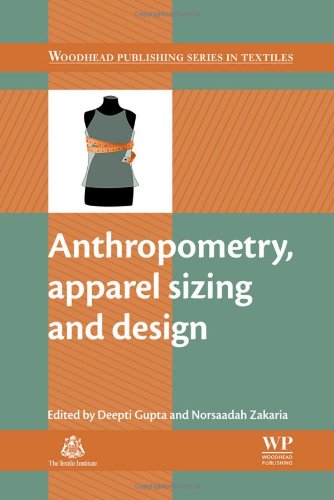

Most ebook files are in PDF format, so you can easily read them using various software such as Foxit Reader or directly on the Google Chrome browser.
Some ebook files are released by publishers in other formats such as .awz, .mobi, .epub, .fb2, etc. You may need to install specific software to read these formats on mobile/PC, such as Calibre.
Please read the tutorial at this link: https://ebookbell.com/faq
We offer FREE conversion to the popular formats you request; however, this may take some time. Therefore, right after payment, please email us, and we will try to provide the service as quickly as possible.
For some exceptional file formats or broken links (if any), please refrain from opening any disputes. Instead, email us first, and we will try to assist within a maximum of 6 hours.
EbookBell Team

4.8
54 reviewsOne of the greatest challenges for the apparel industry is to produce garments that fit customers properly. Anthropometry, Apparel Sizing and Design addresses the need for improved characterization of our populations in order to tailor garments according to size, weight, and shape of consumers. This book reviews techniques in anthropometry, sizing system developments, and their applications to clothing design.
Part one considers a range of anthropometric methods. The text discusses the range of sizing systems, including data mining techniques, useful for bridging the gap between ergonomists and designers. Chapters examine three-dimensional anthropometric methods and multivariate and bivariate analysis for identifying key body dimensions. Part two then explains how to analyze anthropometric data to develop appropriate sizing systems. Here, the book discusses classification and clustering of human body shapes, the importance of national surveys, and using the data obtained to ensure inclusive design strategies. The book covers sizing systems developed for particular groups, apparel size designation, and the potential for international standardization. It considers the advantages of 3D body scanning and computer-aided design, and the use of body motion analysis to address ease allowance requirements of apparel.
With its distinguished editors and international contributors, this work is an essential reference, particularly due to the specific combination of aspects of anthropometry and the sizing of clothing, for researchers, garment designers, students, and manufacturers in the clothing and fashion industry.